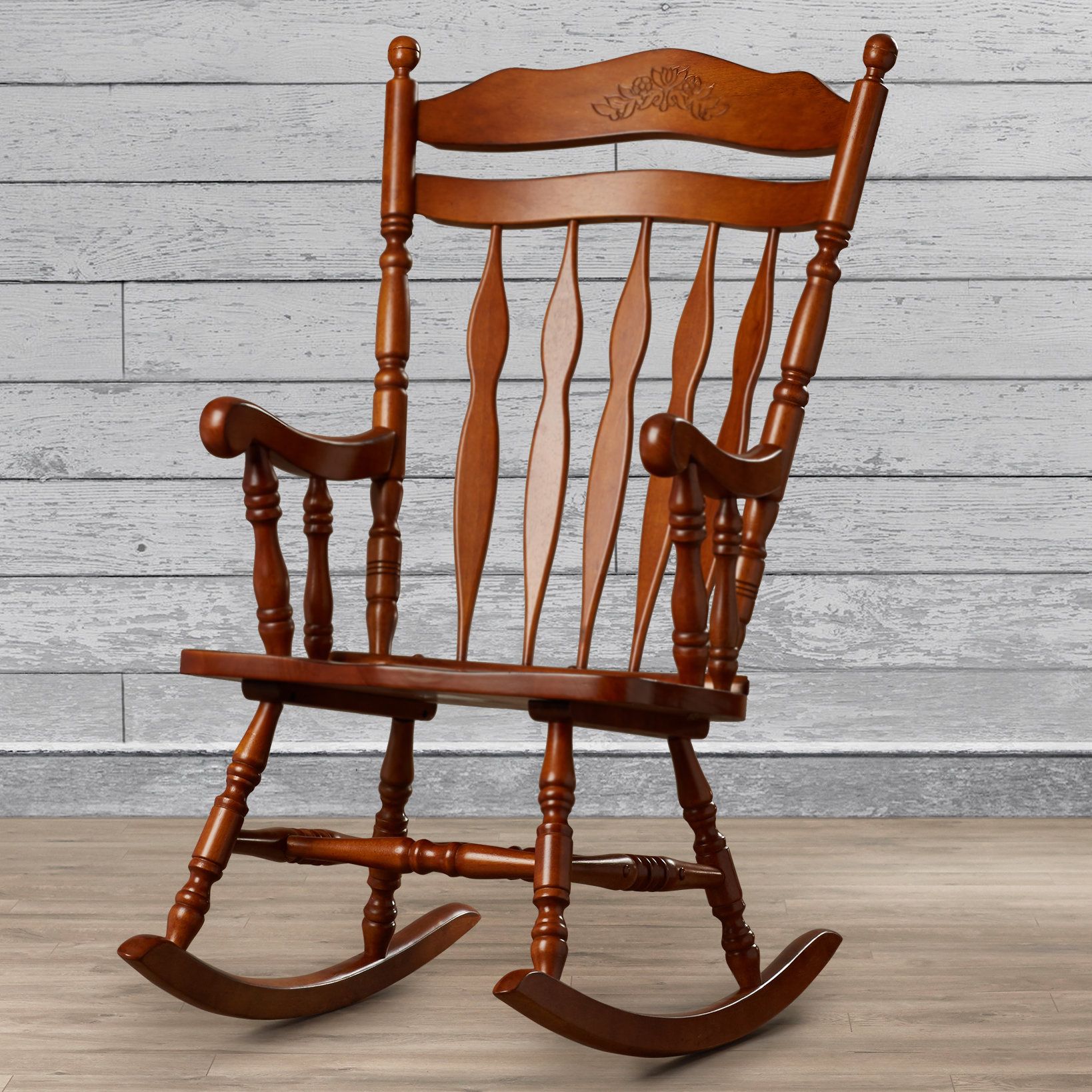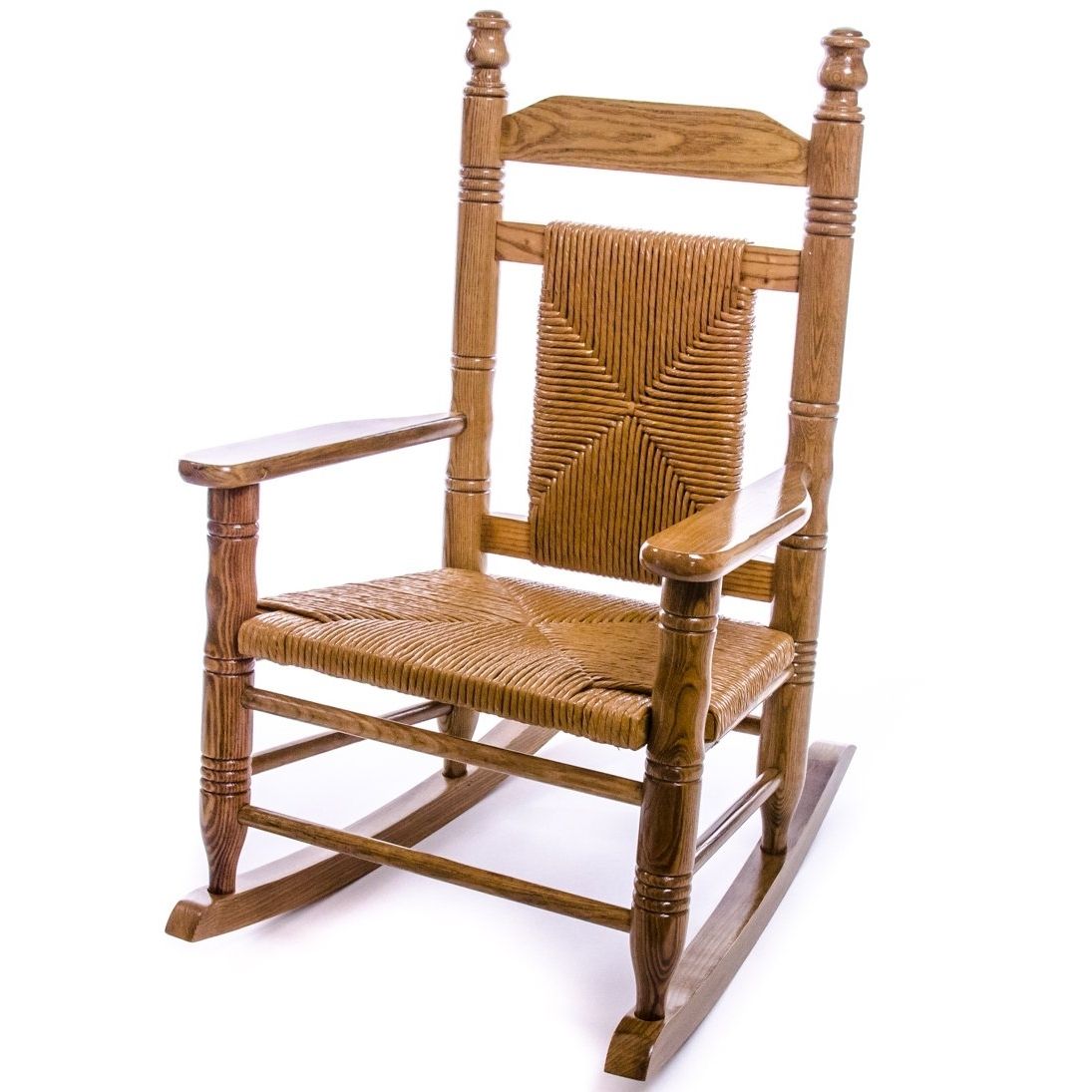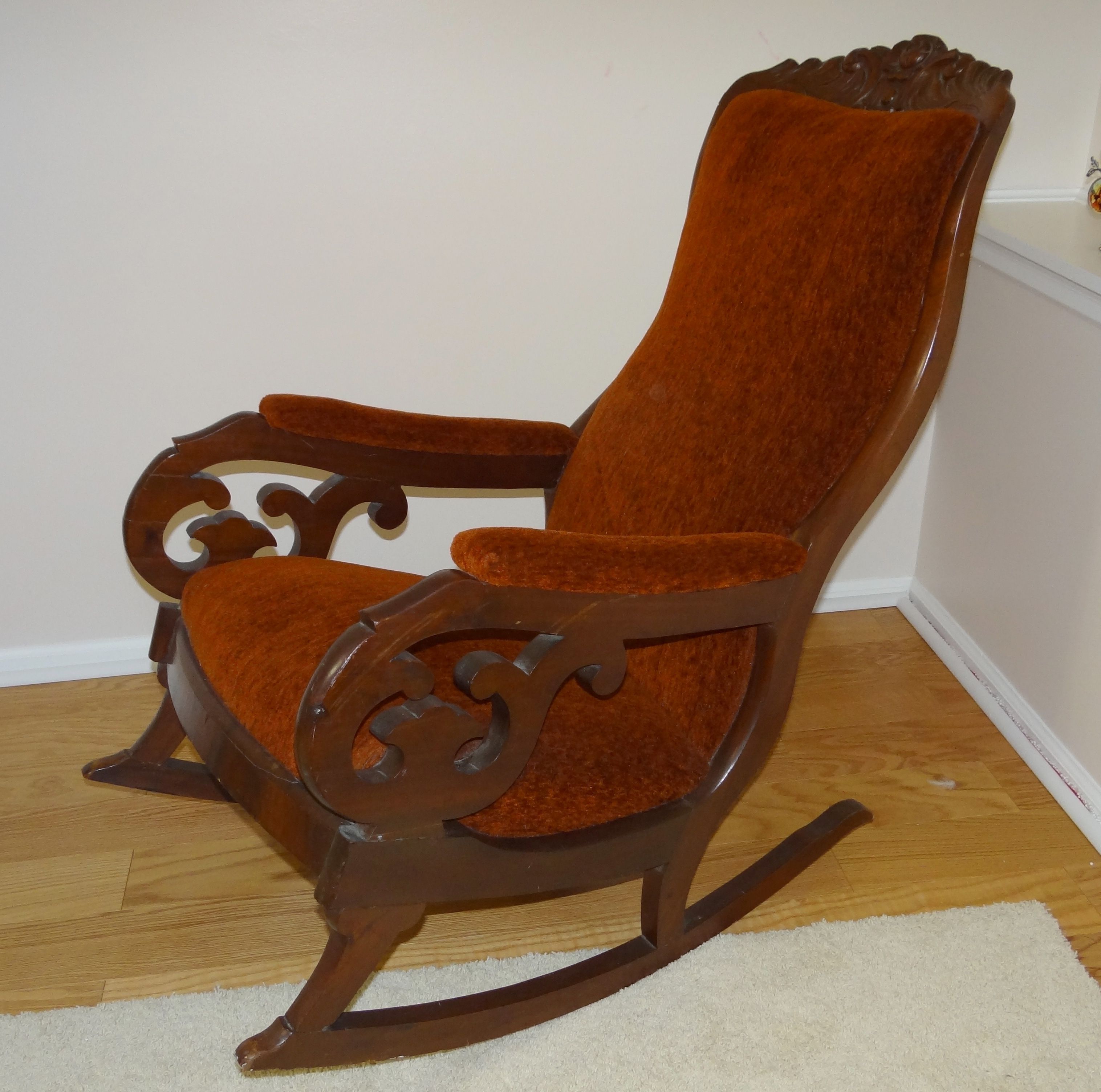History and Evolution of the Rocking Chair

The rocking chair, a seemingly simple piece of furniture, has a rich and fascinating history that spans centuries and continents. Its evolution from humble beginnings to a beloved icon of American culture is a testament to its enduring appeal and adaptability.
Early Origins and Development
The origins of the rocking chair can be traced back to ancient times. While the exact origin remains uncertain, evidence suggests that rocking motions were incorporated into furniture design in various cultures. For example, ancient Egyptians used rocking stools, while the Chinese employed rocking beds.
- The earliest known rocking chair, the “Boston Rocker,” was created in the early 18th century in Boston, Massachusetts. This chair featured a curved bottom and rockers that allowed for a smooth and rhythmic rocking motion.
- The Boston Rocker was a popular choice among the upper classes and quickly became a symbol of status and sophistication. Its design was widely copied and adapted, leading to the development of various rocking chair styles throughout the 19th century.
The Rocking Chair in American Culture
The rocking chair has played a significant role in American history and culture. It has been associated with relaxation, contemplation, and a sense of home.
- During the 19th century, the rocking chair became a staple in American homes. It was used for everything from reading and sewing to entertaining guests and rocking babies to sleep.
- The rocking chair was also a popular subject in American literature and art. Writers like Mark Twain and Henry James used the rocking chair as a symbol of American life and culture.
Key Design Elements
The design of the rocking chair has evolved over time, with various key elements contributing to its functionality and aesthetics.
- The rockers are the most important feature of a rocking chair. They are typically made of wood and are attached to the bottom of the chair. The shape and size of the rockers determine the rocking motion and stability of the chair.
- The seat of the rocking chair can be made of various materials, including wood, fabric, and leather. The shape and comfort of the seat are crucial for a comfortable rocking experience.
- The back of the rocking chair provides support and can be designed in various styles, from simple and straight to ornate and elaborate.
The Rocking Chair Today
Today, the rocking chair remains a popular piece of furniture. It is available in a wide variety of styles and materials, from traditional to modern. Rocking chairs are often used in homes, offices, and public spaces, providing a comfortable and relaxing seating option.
Types and Styles of Rocking Chairs

The rocking chair, a timeless symbol of comfort and relaxation, comes in a variety of types and styles, each reflecting a unique design aesthetic and historical context. This diversity allows for a rocking chair to seamlessly blend with any décor, offering a personalized touch to any space.
Types of Rocking Chairs, Old fashioned rocking chair
Rocking chairs can be categorized based on their primary function and design features. These categories represent the different ways rocking chairs are used and the variations in their construction.
- Classic Rocking Chair: The most traditional type, featuring a curved base that provides a gentle rocking motion. These chairs are typically made from wood and have a comfortable, high back.
- Glider: These chairs use a smooth, gliding motion instead of the traditional rocking motion. Gliders are often preferred for their quiet operation and gentle movement, making them ideal for nurseries and living rooms. They often have a lower back and a more contemporary design.
- Porch Swing: These are larger rocking chairs designed for multiple people. They are typically suspended from a frame and are ideal for outdoor use. Porch swings often have a wider base and a more elaborate design.
Styles of Rocking Chairs
The style of a rocking chair often reflects the historical period or design movement it originated from. Different styles are characterized by their distinctive features, such as the shape of the back, the arms, and the legs.
- Victorian: Victorian rocking chairs are known for their elaborate carvings, ornate details, and plush upholstery. They often feature a high back, curved arms, and intricate floral motifs. The Victorian era, characterized by its opulent and romantic aesthetic, heavily influenced furniture design, resulting in elaborate and intricately crafted rocking chairs.
- Shaker: Shaker rocking chairs are known for their simple, functional design. They are typically made from wood with a plain, unadorned finish. Shaker chairs emphasize practicality and functionality, often featuring a low back, straight arms, and a minimalist aesthetic. Their design reflects the Shaker community’s focus on simplicity and utility, emphasizing clean lines and functional form.
- Arts and Crafts: Arts and Crafts rocking chairs are characterized by their handcrafted details, natural materials, and emphasis on craftsmanship. They often feature a high back, curved arms, and a sturdy construction. The Arts and Crafts movement, emphasizing handcrafted objects and natural materials, influenced the design of these rocking chairs, promoting a sense of connection to nature and traditional craftsmanship.
Materials Used in Rocking Chairs
Rocking chairs are made from a variety of materials, each offering unique properties and aesthetic qualities. The choice of material often depends on the intended use, style, and budget.
- Wood: Wood is the most common material for rocking chairs. It is durable, versatile, and can be finished in a variety of ways. Popular wood choices include oak, maple, cherry, and walnut. The choice of wood can significantly influence the overall look and feel of the rocking chair, with each wood type offering unique grain patterns and color variations.
- Metal: Metal rocking chairs are becoming increasingly popular, offering durability and modern aesthetics. They can be made from steel, aluminum, or wrought iron. Metal rocking chairs are often used in outdoor settings due to their resistance to weather conditions.
- Wicker: Wicker rocking chairs are known for their lightweight, airy design. They are typically made from woven rattan or willow and are often used in outdoor settings. Wicker rocking chairs offer a rustic and natural aesthetic, blending seamlessly with outdoor spaces.
Rocking Chair Styles, Materials, and Historical Contexts
| Style | Material | Historical Context |
|---|---|---|
| Victorian | Wood (often mahogany or rosewood), upholstered with velvet or brocade | 19th century, characterized by its elaborate and ornate design |
| Shaker | Wood (typically maple or cherry), finished with a simple, unadorned finish | 18th and 19th centuries, known for its simple, functional design |
| Arts and Crafts | Wood (often oak or pine), handcrafted details, natural materials | Late 19th and early 20th centuries, emphasizing handcrafted objects and natural materials |
| Mid-Century Modern | Wood, metal, or plastic, clean lines, minimalist design | Mid-20th century, characterized by its streamlined and functional design |
The Appeal and Benefits of Rocking Chairs: Old Fashioned Rocking Chair

The appeal of rocking chairs lies in their unique ability to evoke a sense of comfort, nostalgia, and tranquility. The gentle, rhythmic motion of a rocking chair has been shown to have both psychological and physiological benefits, making it a popular choice for relaxation, stress reduction, and even therapeutic purposes.
Psychological and Physiological Benefits of Rocking Motion
Rocking motion has been shown to have a calming effect on the nervous system, promoting relaxation and reducing stress. This is due to the rhythmic and repetitive nature of the motion, which can help to regulate the body’s natural rhythms. The gentle swaying can also stimulate the release of endorphins, which have mood-boosting and pain-relieving effects. Additionally, rocking motion can help to improve sleep quality by promoting relaxation and reducing anxiety.
Promoting Relaxation, Comfort, and Well-Being
Rocking chairs are often associated with feelings of comfort and security, creating a sense of peace and tranquility. The gentle rocking motion can help to soothe the mind and body, reducing tension and anxiety. Rocking chairs are often placed in quiet and secluded areas of the home, providing a haven for relaxation and reflection. The act of rocking can also be a meditative experience, allowing individuals to focus on the present moment and let go of worries and anxieties.
Use of Rocking Chairs in Various Settings
Rocking chairs are not just confined to homes; they have found their way into various settings, each with its unique benefits.
- Homes: Rocking chairs are a classic piece of furniture in homes, often placed in living rooms, bedrooms, or sunrooms. They provide a comfortable spot for reading, napping, or simply enjoying the peace and quiet.
- Offices: Some offices are incorporating rocking chairs into their design to promote employee well-being. The gentle rocking motion can help to reduce stress and improve focus, creating a more relaxed and productive work environment.
- Healthcare Facilities: Rocking chairs are increasingly being used in healthcare facilities, particularly in palliative care and hospice settings. The rhythmic motion can provide comfort and support to patients, reducing anxiety and promoting relaxation.
Comparison of Different Types of Rocking Chairs
| Type of Rocking Chair | Pros | Cons |
|---|---|---|
| Traditional Rocking Chair | Classic design, comfortable, versatile | Can be bulky, may require more space |
| Glider Rocker | Smooth and quiet rocking motion, compact design | May not be as stable as traditional rockers |
| Reclining Rocker | Provides additional support and comfort, can be adjusted for different positions | More expensive than traditional rockers, may be heavier |
| Outdoor Rocking Chair | Durable and weather-resistant, ideal for outdoor spaces | May be less comfortable than indoor rocking chairs |
Old fashioned rocking chair – While the old-fashioned rocking chair evokes images of porch-sitting and leisurely afternoons, its simplicity often lacks the ergonomic support needed for extended comfort. The chair and a half rocker recliner offers a modern take on this classic, merging the gentle rocking motion with the plush comfort of a recliner, making it a perfect choice for those who seek both relaxation and a touch of nostalgia.
The gentle rhythmic sway of an old-fashioned rocking chair evokes a sense of nostalgia and tranquility, a stark contrast to the modern, technologically advanced comforts we often seek. While a rocking chair offers a passive, soothing experience, the homedics massage chair recliner takes relaxation to a whole new level, with its built-in massage functions and reclining capabilities.
But there’s something undeniably charming about the simplicity and timeless appeal of a rocking chair, reminding us that sometimes, the most basic things can provide the greatest comfort.